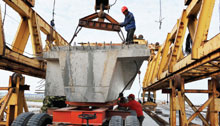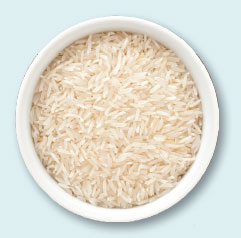In Brief
Finance & Development, June 2013, Vol. 50, No. 2
Material world

The Asia-Pacific region has surpassed the rest of the world in its consumption of materials and will continue to dominate world material flows, according to a United Nations Environment Program report released in April.
The report, Recent Trends in Material Flows and Resource Productivity in Asia and the Pacific, says that the current rate of exploitation of Asia-Pacific’s resource base is no longer sufficient to support the region’s fast-growing economies and changing lifestyles. From 1970 to 2008, the consumption of construction minerals increased 13.4 times, metal ores and industrial minerals 8.6 times, fossil fuels 5.4 times, and biomass 2.7 times.
The report highlights the region’s “material intensity”—that is, the consumption of materials per dollar of GDP—as a more serious concern, because it will increase pressure on the environment and exceed the region’s rapid growth. Currently, material intensity in Asia-Pacific is three times that of the rest of the world.
Growing affluence—rather than population growth—is now the most important driver of environmental pressure from resource extraction in the region, the report says.
War against hunger

Governments have the primary responsibility for assuring the food security of their citizens, and action in this area is crucial, the United Nations Food and Agriculture Organization’s director-general told a high-level meeting in April.
“The Millennium Development Goals have pushed us forward. But with 870 million people still suffering from hunger, the war against food insecurity is far from over,” José Graziano da Silva said at the meeting, whose purpose was to discuss the UN’s vision for a strategy against world hunger once the Millennium Development Goals expire in 2015.
“The only effective answer to food insecurity is political commitment at the national level,” he said, adding that the world’s attitude toward hunger has changed profoundly.
But despite the primary responsibility of national governments, today’s globalized economy means that no country acts alone.
“Actions taken by one country or company may affect the food security of others,” while conflicts can lead to instability in neighboring countries and regions, he said.
Public policies should also create opportunities for the most disadvantaged, including subsistence and small-scale producers, women, youth, and indigenous people, he stressed.
Financing growth
A new book published by the African Development Bank explores how structured finance techniques can mobilize African domestic capital to support economic infrastructure projects and economic growth.
Structured Finance: Conditions for Infrastructure Project Bonds in African Markets was officially launched by Charles Boamah, the African Development Bank’s vice president for finance.
“Sound domestic capital markets are critical to the development of African countries,” said Boamah. For this reason, the African Development Bank has, over the past few years. pursued initiatives to help raise the capacity of local capital markets, enabling Africa to tap more long-term finance for infrastructure development.
“This report is very timely, given the urgency to significantly scale up financing to address Africa’s large and growing infrastructure deficit,” said Boamah.
African countries have been growing at rates in excess of 5 percent, with 7 of the world’s 10 fastest-growing countries located on the continent. This has created a growing middle class and an expanding financial sector.
The report elaborates on examples from other emerging markets, such as Brazil, Chile, Malaysia, and Peru, using project bonds to catalyze investors’ interest in infrastructure projects. Such examples can serve as a template for African countries to develop their markets.
Events in 2013
June 17–18, Fermanagh, United Kingdom
Group of Eight Summit
September 5–6, St. Petersburg, Russia
Group of Twenty Summit
September 25–27, Sopot, Poland
European Forum for New Ideas
October 11–13, Washington, D.C.
Annual Meetings of the World Bank and the IMF
October 18–19, Panama City, Panama
Ibero-American Summit
November 7–8, Washington, D.C.
IMF Fourteenth Annual Jacques Polak Research
Conference
November 13–14, Amsterdam, Netherlands
World Pension Summit
Steady cash flow

Remittances to Latin America and the Caribbean showed a slight increase in 2012 over the previous year, according to the latest report on remittances by the Multilateral Investment Fund (MIF), a member of the Inter-American Development Bank Group.
The report, “Remittances to Latin America and the Caribbean in 2012: Differing Behavior among Sub-regions,” says that the region received a total of $61.3 billion in remittances last year. This amount represents a year-over-year increase of $300 million, a 0.6 percent increase since 2011. After a historic high of nearly $65 billion in 2008, and a 15 percent drop due to the financial crisis in 2009, money transfers to the region have stabilized, the report suggests.
“The latest data show that migrants continue to provide critical financial support to millions of households across the region,” said MIF General Manager Nancy Lee. “The development impact of remittances can be much greater if families have the option to save some of these flows rather than converting them all into cash upon receipt.”
Remittance flows continue to represent an important source of foreign inflows in many countries in the region, and constitute more than 10 percent of GDP in several countries, including El Salvador, Guatemala, Guyana, Haiti, Honduras, Jamaica, and Nicaragua. These flows also represent an important source of income for the millions of families in the region that use the transfers for basic needs and to invest in education, health, housing, and small businesses.


